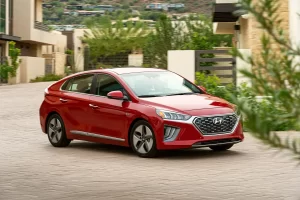The Role of Telematics in Modern Auto Insurance Policies

Let’s be honest—car insurance has always felt a bit like a guessing game. Insurers estimate risk based on broad categories (age, location, driving record), and drivers hope they’re not overpaying. But telematics? Well, that’s changing everything. It’s like swapping a blurry photo for a 4K video—suddenly, the details are crystal clear.
What Exactly Is Telematics?
Telematics blends telecommunications and informatics—fancy terms for tracking your driving behavior via GPS, sensors, and onboard diagnostics (OBD). Think of it as a fitness tracker, but for your car. It records:
- Speed
- Braking habits
- Mileage
- Time of day you drive
- Even how sharply you take turns
Insurers use this data to personalize your policy. Safe driver? You could save big. Love late-night joyrides? Your rates might reflect that.
Why Telematics Is Shaking Up Auto Insurance
Here’s the deal: traditional insurance models lump drivers into generalized risk pools. Telematics flips the script by focusing on actual behavior, not assumptions. A few ways it’s making waves:
1. Pay-How-You-Drive (PHYD) Programs
These programs adjust premiums based on real-time driving data. Progressive’s Snapshot, Allstate’s Drivewise, and State Farm’s Drive Safe & Save are just a few examples. Drive like a cautious grandparent? Cha-ching—discounts await.
2. Fairer Pricing for Low-Mileage Drivers
If you barely touch your car (thanks, remote work), why pay the same as a daily commuter? Telematics lets insurers charge based on miles driven—finally, a win for the homebodies.
3. Crash Detection and Emergency Response
Some systems detect accidents automatically and alert emergency services. That’s not just convenient—it could save lives.
The Pros and Cons of Telematics
Sure, telematics sounds futuristic, but is it right for everyone? Let’s break it down.
Advantages
- Lower premiums: Safe drivers can save up to 30%.
- Personalized feedback: Get tips to improve your driving (and your rates).
- Faster claims: Data doesn’t lie, so disputes shrink.
Drawbacks
- Privacy concerns: Not everyone wants their insurer tracking every move.
- Penalties for bad habits: Lead foot? Your rates might climb.
- Limited availability: Some insurers or regions lag behind.
How Telematics Data Is Collected
Curious how this works in practice? Here’s the tech behind the scenes:
| Method | How It Works |
| OBD-II Dongle | Plugs into your car’s diagnostic port (usually under the dash). |
| Smartphone Apps | Uses your phone’s GPS and accelerometer—no extra hardware. |
| Built-In Systems | Found in newer cars (e.g., GM’s OnStar, Tesla’s telematics). |
Most programs sync data to your insurer’s platform, where algorithms work their magic.
The Future of Telematics in Insurance
This isn’t just a trend—it’s the new normal. A few predictions:
- UBI (Usage-Based Insurance) will dominate: By 2030, over 70% of auto policies could incorporate telematics.
- AI-driven insights: Imagine your insurer predicting risky routes before you take them.
- Integration with smart cities: Traffic lights, road sensors, and your car chatting to optimize safety (and rates).
Of course, with great data comes great responsibility. Insurers will need to balance innovation with transparency—nobody wants “Big Brother” vibes.
Final Thoughts: Is Telematics Right for You?
If you’re a safe, low-mileage driver, telematics could be a wallet-friendly game-changer. But if privacy trumps savings, traditional policies might still feel safer. Either way, one thing’s clear: the road ahead is data-driven—and that’s not necessarily a bad thing.






